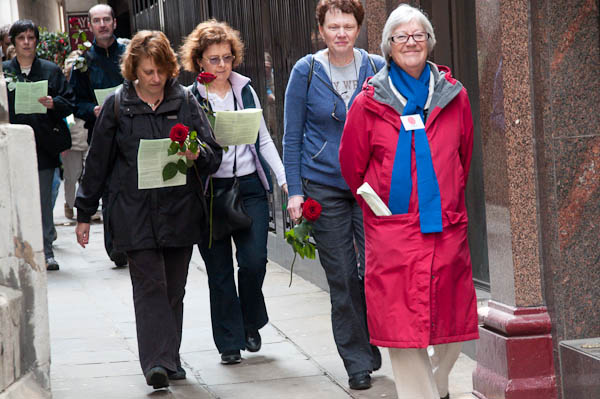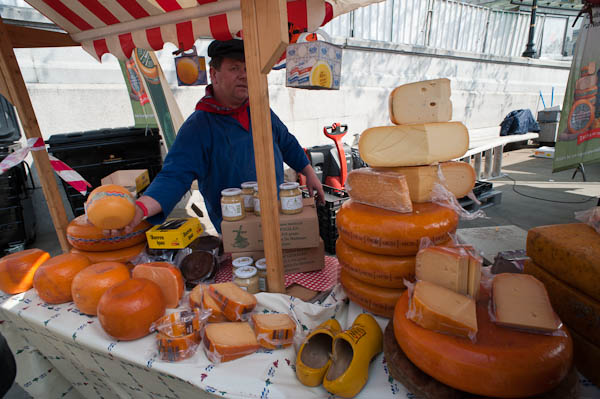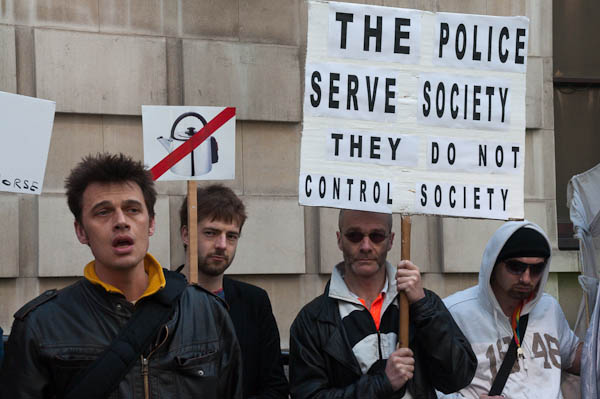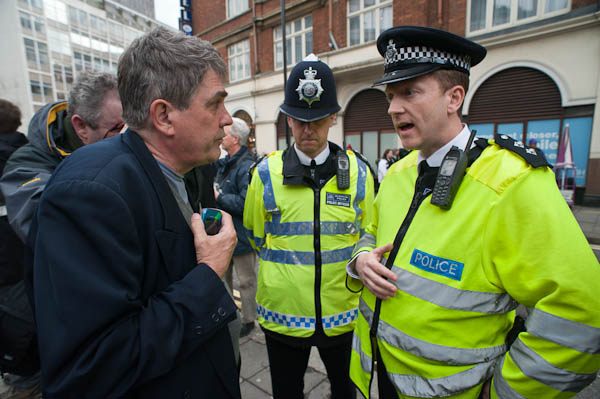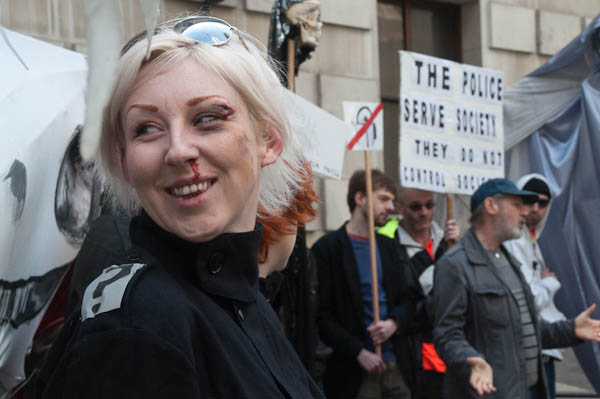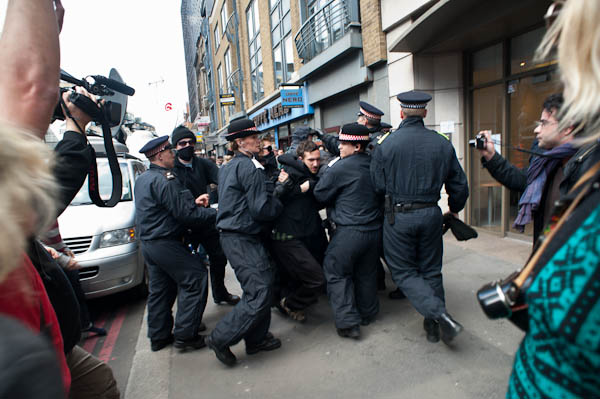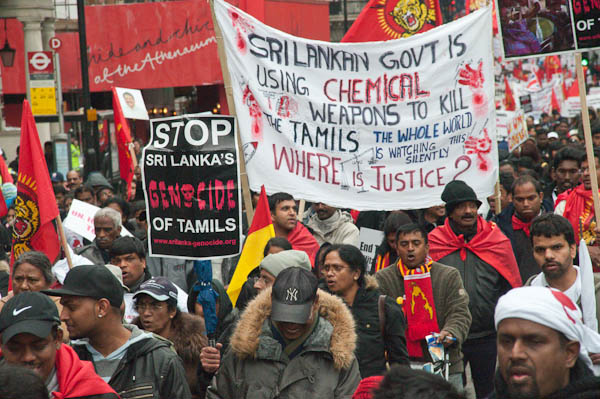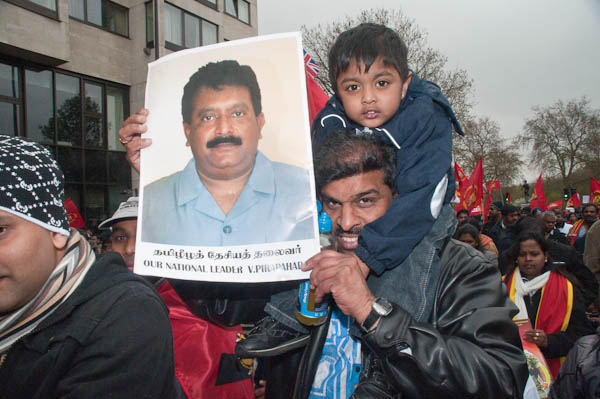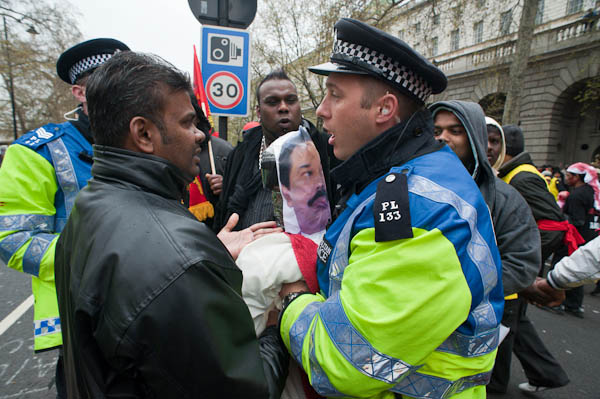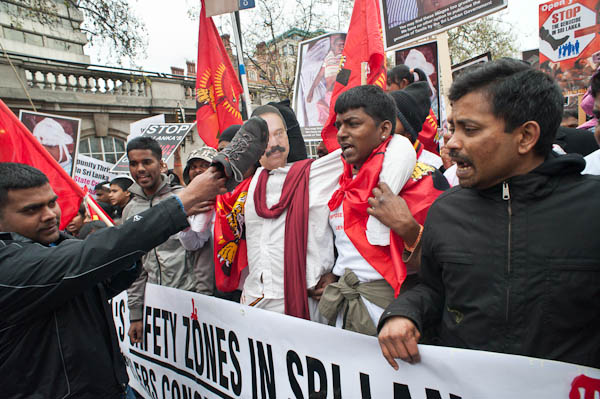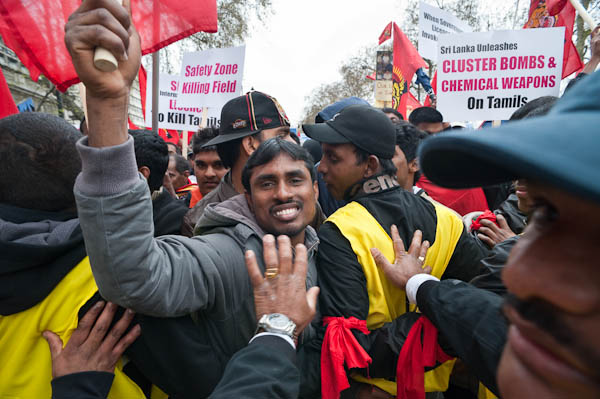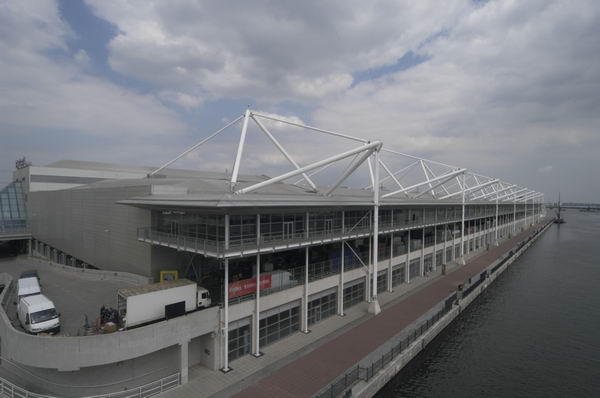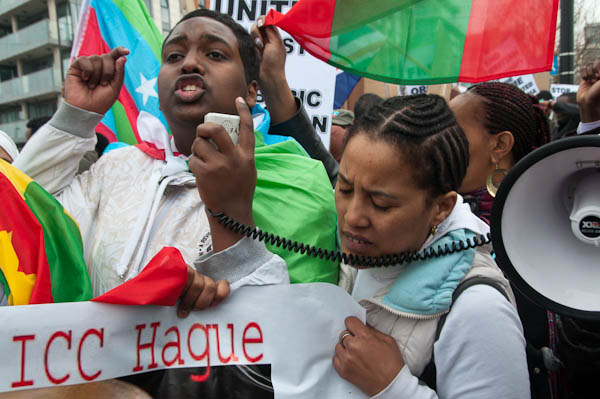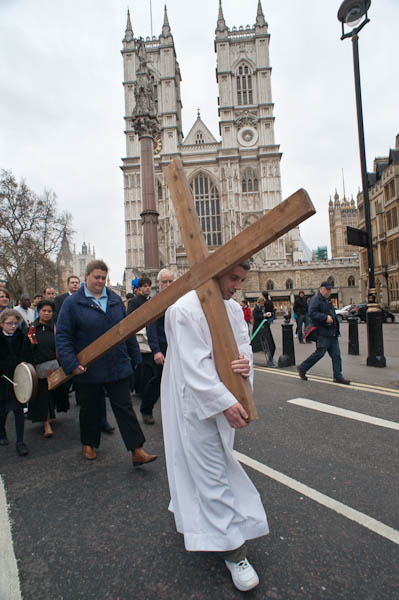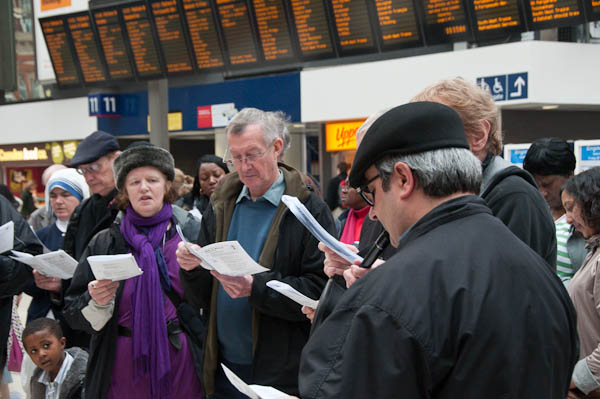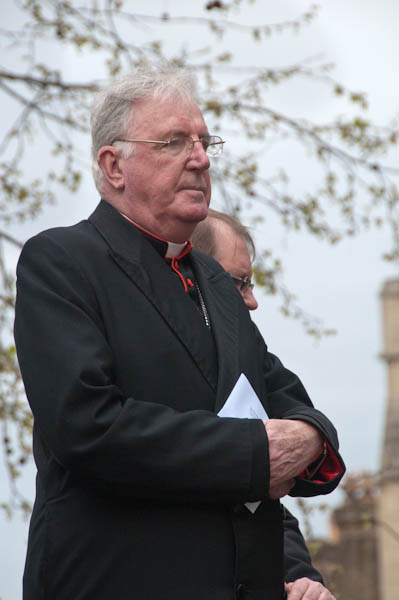While I was writing this piece I took a look at the Sky News web site, which carried a short report of this march from Bethnal Green Police Station to lay flowers at the scene of his death. It wasn’t a bad report of the actual event, with a fairly indifferent photo and some of the short address by Ian Tomlinson’s stepson on video, but what really stunned me were some of the ignorant and vituperative comments made on the site.
For those of us who were there – and went to the vigil at the Bank later – it was clear that the organisers of the G20 Meltdown and this march had been shaken by the killing. The police too I felt showed it had shocked them. And Paul King made it clear on the video that the family appreciated the support they had been shown by the marchers.
Whoever posted the report on Sky couldn’t restrain themselves from feeding the flames of ignorance in the final paragraphs where they use a quotation from the G20 meltdown site to suggest that this event would somehow end in riot. Nobody who was there would have thought there was any chance of that. Anyway, here’s my account and some opinion. More pictures and less text on My London Diary.
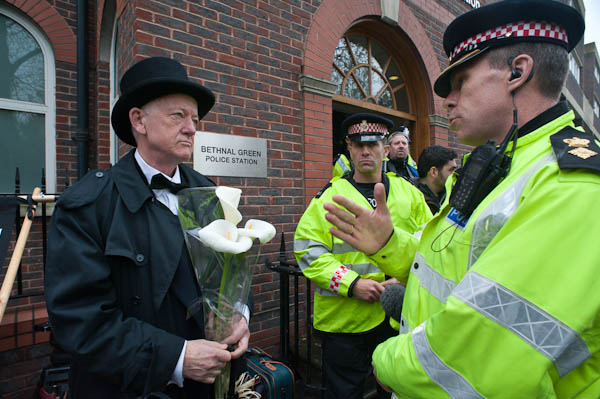
Chris Knight discusses arrangements with the police
Several hundred marchers, some carrying flowers, and almost as many photographers and videographers turned up at Bethnal Green Police Station for the start of a memorial march for newspaper seller Ian Tomlinson. The march was called by G20 Meltdown, whose organisers including Chris Knight and Marina Pepper were among those who led the march. They had intended to hold a carnival party in protest at the Bank of England on April 1, but police turned it into something far more sinister, which ended with many demonstrators being attacked by police and Tomlinson’s death.
At the Tomlinson family’s request, the march was peaceful, silent and respectful. Although they did not take part in the march, stepson Paul King spoke briefly at the start from the steps of the police station, surrounded by a five-deep semicircle of cameras. He described the family’s pain from the tragic death of a “much-loved and warm-hearted man” and at seeing the video of the assault, and hoped that the invstigation would be full and that “action will be taken against any police officer who contributed to Ian’s death through his conduct.” He ended by saying that he hoped he could continue to rely on the support of the demonstrators in the future.
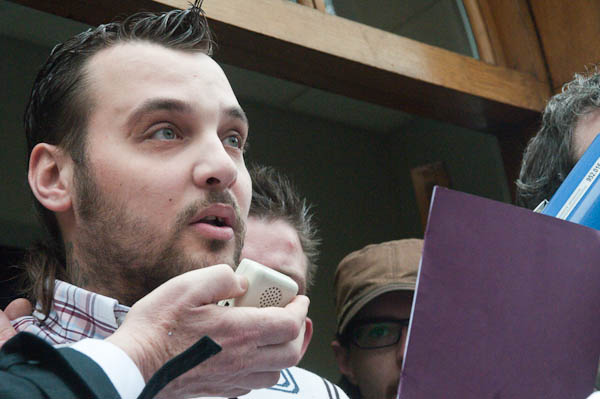
Paul King
Short speeches from the march organisers called for a properly independent enquiry into police violence surrounding the G20 protests and for criminal charges to be brought against those responsible.
Leaflets were distributed for a new campaign to end violent police tactics at peaceful demonstrations. There is a No to Police Violence web-site and also a blog, Once Upon A Time in Hackney.
The police were solicitous, on their best behaviour, clearly wanting to avoid any friction, and the officer in charge was I think one of those who had been in charge at Bank on the day the incident happened.
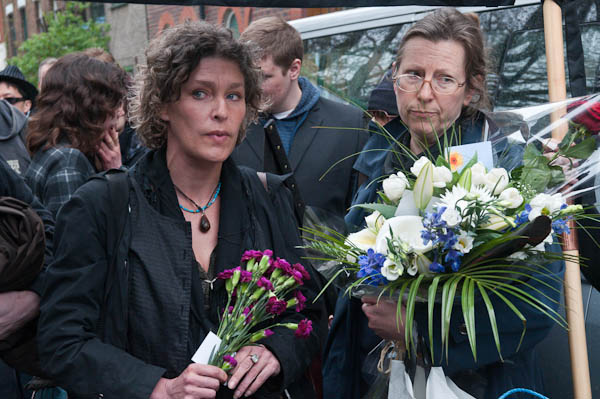
Some marchers carried flowers to lay close to where Ian Tomlinson was the victim of an unprovoked police attack from behind on the corner of Royal Exchange Buildings. Here there were more speeches, which I missed, having left to photograph the Tamil march.
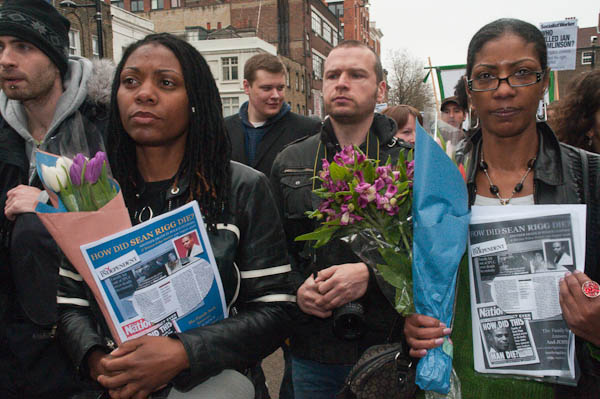
Among those marching were some of Sean Rigg‘s family, and I’m told his sister spoke eloquently about his case at Bank. Sean died after being taken ill in police custody in Brixton Police Station on Thursday 21 August 2008, and his family also took part in last year’s annual United Friends and Families march along Whitehall in October and at the Justice 4 Ricky Bishop march in south London in November.
Chris Knight had announced he would be making a vigil at Royal Exchange Buildings in memory of Paul Tomlinson over the Easter weekend, and invited people to come at any time, but in particular to join a candlelit vigil at 8pm. I couldn’t make that but I did call in the afternoon and photograph him and the flowers at the scene.

Tragic though it was, and we must all feel a great sympathy with his family, the death of Ian Tomlinson following an attack (or possibly more than one attack) by police during the demonstration at Bank where he was a bystander is not the real story. I almost fell into same trap as the media by describing him as an “innocent bystander“; he was, but then at least 99% of the demonstrators were “innocent demonstrators” and somehow that isn’t a cliché you see much.
And of course it isn’t a story about a few coppers who went berserk, although there were quite a number whose conduct clearly went beyond the acceptable and as well as the one or two who may face criminal charges unless the CPS wriggles them out of it, if justice is to be served there would be hundreds of disciplinary cases with many of those concerned being drummed out of the force.
Its a story that sticks not to the bobby on the beat but to the politicians in and out of uniform who run them, who appeared on the media promising riots and Armageddon, who instilled their officers with fear and hate and trained them to efficiently beat innocent protesters with batons. Labour ministers, a Tory mayor, police chiefs have all conspired to make demonstrators – to borrow a term from the Scientologists – “fair game.” Its a way of looking at people that justifies almost any action – such as planting catapults as evidence (it happened at Speakers’ Corner on March 28), destroying their property and riot police marching in squads into unarmed crowds of people who are holding their hands up in the air, intent on bludgeoning everyone to the ground. It’s a policy which can also cover misusing laws, issuing misleading (or false) statements to the press, and more.
The media of course don’t come out of this at all well. The BBC in particular I think let us down; they simply do not have enough first-hand reporters and far too many people with their seats firmly on office chairs. Like the press they compete in the stoking of public fear and the stigmatising of democratic protest. Of course it isn’t largely the journalists who are responsible – with a few exceptions (mainly among ‘columnists’) they do their job as best they can, often, particularly for photographers and videographers, at some personal risk. But it isn’t the guys on the job who produce the programmes and papers, who decide on what has “news value” and dictate the values behind that decision.
To find the real stories behind the news you need to look elsewhere, to blogs and web sites, where you see eye-witness reports, pictures and video. The media are too busy resenting the presence of such things to have worked out how to make effective use of these sources – and of course like any other sources you need to read them with a critical and often cynical eye on where they come from. But it certainly isn’t a coincidence that the two stories which have dominated British news over the past week came from the mobile phone of a “citizen journalist” and blogs.
And if you want to know the real story behind the arrests of over a hundred activists suspected of conspiring to commit aggravated trespass at the Ratcliffe-on-Soar Power Station you won’t be looking at the press but to the blogs.

Ratcliffe-on-Soar Power Station
